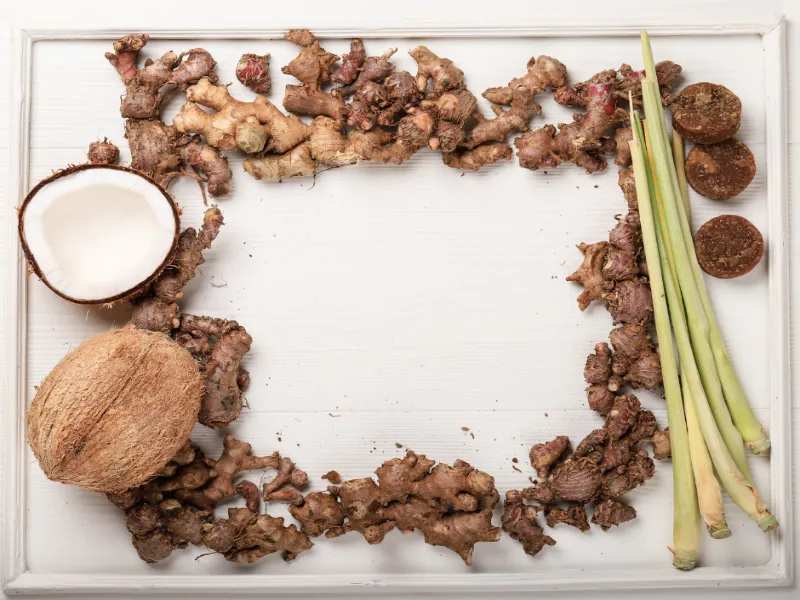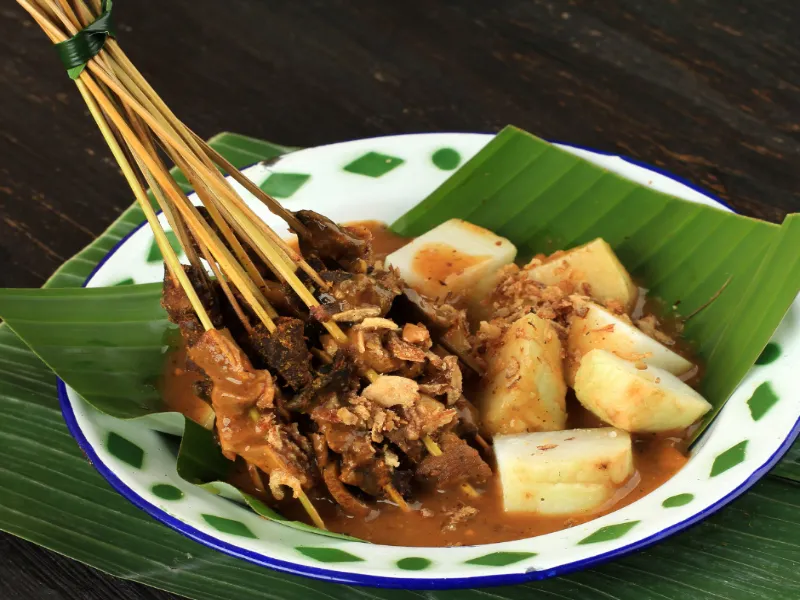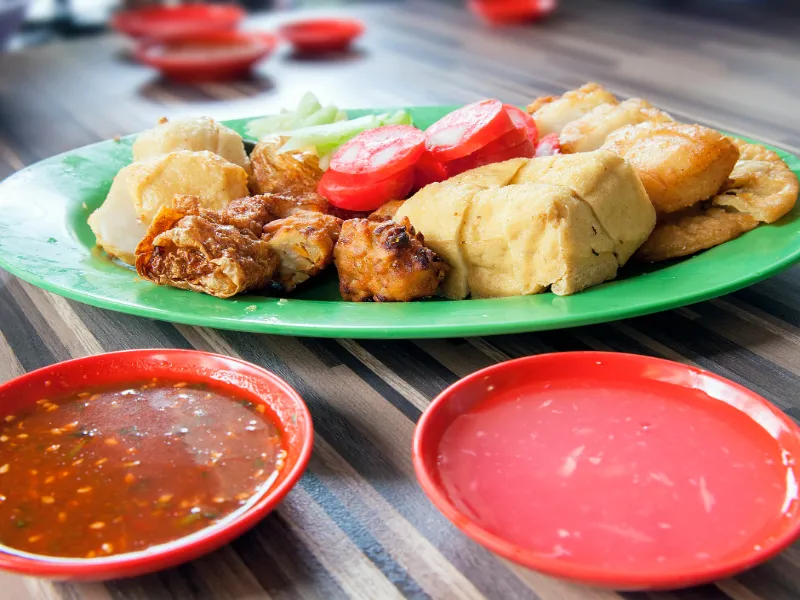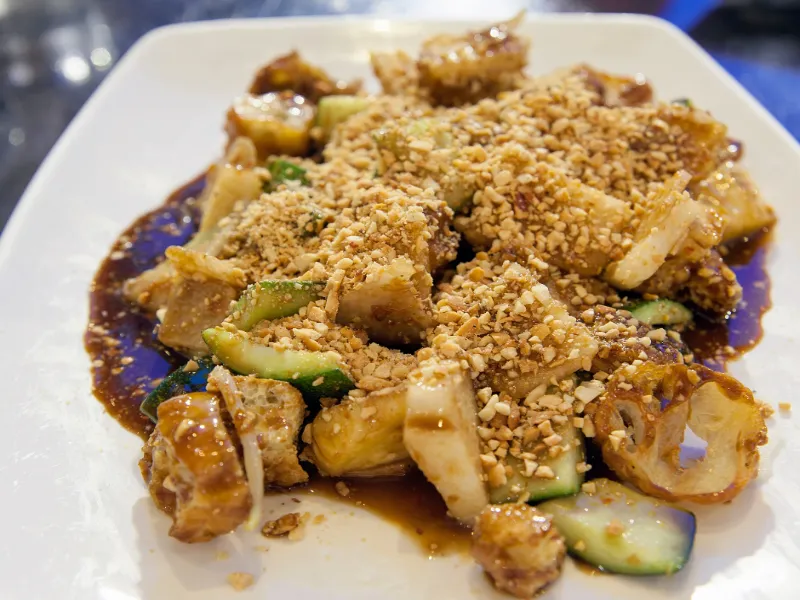Traditional Malaysian Cuisine
Malaysia’s traditional cuisine is a fascinating reflection of the country’s vibrant cultural diversity. With communal food preparation being a cornerstone of Malaysian cooking, it brings people together to prepare and enjoy delightful meals. The cuisine is known for its staple foods and preferred meats, which vary across regions and reflect local preferences. Additionally, essential ingredients such as aromatic spices, fermented shrimp paste, and coconut milk contribute to the unique flavors and depths of Malaysian dishes. Embracing this rich culinary heritage allows one to embark on a gastronomic adventure through the heartlands of Malaysia. Source: Malaysian Food
Malaysia’s Cultural Diversity
The culinary landscape of Malaysia reflects its rich and diverse cultural heritage. The country’s cultural diversity is evident in its cuisine, which draws influences from various ethnic groups, such as Malays, Chinese, and Indians. Malaysians take pride in their communal food preparation, with many dishes being prepared and enjoyed together. This cultural diversity is also reflected in the staple foods and preferred meats used in Malaysian cooking. Essential ingredients like lemongrass, coconut milk, and spices play a vital role in giving Malaysian dishes their unique flavors.

In addition to the cultural diversity found in the ingredients and cooking methods, Malaysia’s cuisine boasts a wide range of delicious dishes that showcase this diversity. Starters and snacks like Roti Canai, Lor Bak, Popiah, Char Koay Kak, and Rojak offer a tantalizing introduction to Malaysian flavors. These dishes encapsulate the fusion of flavors and culinary techniques that make Malaysian cuisine so special.
One unique aspect of Malaysian food cultural diversity is the harmonious coexistence of different ethnic cuisines within the same region. This allows for a truly multicultural gastronomic experience where individuals can explore an array of flavors without leaving one city or town. This blending of cultures has given rise to vibrant culinary scenes in places like Penang and Kuala Lumpur.
A story unfolds when you delve into the origins of these dishes rooted in Malaysia’s cultural diversity. One such story revolves around Roti Canai – a popular flatbread dish that originated from Indian immigrants who settled in Malaysia many years ago. Over time, it has become an iconic staple across all communities within Malaysia’s diverse food culture. This story not only showcases the cultural integration but also highlights how food has the power to bring people together despite their differences.
Malaysia’s cultural diversity is deeply ingrained in its cuisine, making it a treasure trove for food enthusiasts seeking new flavors and experiences. Whether you’re indulging in Malaysian food in a hawker or dining at high-end restaurants, the diverse culinary landscape of Malaysia never fails to captivate with its unique blend of flavors and cultural influences.
Preparing food together may bring people closer, unless you’re an awful cook and they’re too polite to mention it.
Communal Food Preparation
A table highlighting the key aspects of Communal Food Preparation:
| Aspect | Description |
|---|---|
| Purpose | To promote unity and foster community bonds |
| Process | Multiple individuals working together to prepare and cook meals |
| Ingredients | Varied ingredients sourced from different communities |
| Techniques | Traditional methods passed down through generations |
In addition to the collaborative nature of Communal Malaysian Food Preparation, it also serves as a platform for cultural exchange. Through shared cooking experiences, diverse communities come together to appreciate and learn from one another’s culinary traditions.
Historically, Communal Food Preparation has its roots in Malaysia’s long-standing communal practices. The concept of preparing meals together dates back centuries when families and neighbors would gather to collectively cook and share food during special occasions or festive celebrations. This tradition continues to be cherished today as a symbol of unity and harmony within Malaysian society.
Malaysia’s culinary scene is as diverse as its population, with staple foods and preferred meats that will make your taste buds do a little dance of joy.
Staple Foods and Preferred Meats
Traditional Malaysian cuisine is known for its diverse range of staple foods and preferred meats. Malaysians have a deep appreciation for their communal food preparation traditions, where families and communities come together to create flavorful and satisfying dishes. Rice, noodles, and bread are among the staple foods in Malaysian cooking, while chicken, beef, and seafood are the preferred meats. These ingredients form the foundation of many classic Malaysian dishes.
To provide a visual representation of the staple foods and preferred meats in Malaysian food, here is a table showcasing some popular examples:
| Staple Foods | Preferred Meats |
|---|---|
| Rice | Chicken |
| Noodles | Beef |
| Bread | Seafood |
Malaysian cuisine is also known for its use of essential ingredients that enhance the flavors of the dishes. These include aromatic herbs and spices like lemongrass, ginger, garlic, and chili peppers. The combination of these ingredients brings unique tastes and aromas to traditional Malaysian dishes.
One interesting fact about traditional Malaysian cuisine is that it draws influences from various cultures such as Malay, Chinese, Indian, and indigenous ethnic groups. This blending of cultural influences has resulted in a rich culinary heritage that showcases diverse flavors and cooking techniques.
(Source: ‘1. Traditional Malaysian Cuisine) Malaysian cooking: where the spice rack is a hodgepodge of flavors, and the secret ingredient is a sense of adventure.’
Essential Ingredients in Malaysian Cooking
Malaysian Cuisine Elements:
In Malaysian food cooking, certain ingredients play a vital role in bringing out the authentic flavors. These essential ingredients form the backbone of traditional Malaysian cuisine, granting it a unique taste and aroma.
| Rice | Belacan | Galangal |
| Coconut milk | Tamarind | Lemongrass |
| Chili pepper | Kaffir lime leaves | Candlenuts |
These ingredients serve as the foundation for popular Malaysian dishes such as Nasi Lemak and Rendang. In addition to rice, coconut milk, and chili peppers, unique components like belacan (a shrimp paste), galangal (a ginger-like root), and candlenuts enrich the complex flavors.

Interestingly, many of these essential ingredients in Malaysian food cooking can be traced back to culinary influences from neighboring Southeast Asian countries such as Thailand and Indonesia. Through cultural exchange over centuries, these ingredients have become deeply ingrained in Malaysian cuisine.
A local legend tells the tale of how the use of belacan became significant in Malaysia. It is said that during ancient times, when a group of Indonesian sailors arrived on Malaysian shores, they brought along belacan as part of their food supplies. The locals were fascinated by its umami flavor and started incorporating it into their own cooking. This culinary encounter eventually shaped the essence of Malaysian gastronomy we know today.
Get ready to have your taste buds do the happy dance – these Malaysian dishes are gonna rock your world!
The Best Malaysian Dishes
When it comes to Malaysian cuisine, there is a wide array of delectable dishes that are bound to tantalize your taste buds. In this section, we’ll be diving into the world of starters and snacks, where you’ll discover a plethora of mouthwatering options to kickstart your culinary adventure.
From crispy and flavorful samosas to delightful satay skewers sizzling with sweet and savory notes, these Malaysian starters are sure to leave you craving for more. So, get ready to explore the vibrant flavors and aromatic delights that await you in the realm of Malaysian food snacks.
Starters / Snacks

Traditional Malaysian Cuisine offers a wide variety of delicious bite-sized food options known as Starters / Snacks. These dishes are perfect for those looking to start their meal with something light and flavorful.
Here are some popular Starters / Snacks in Malaysian cuisine presented in a table format:
| Dish Name | Description |
|---|---|
| Roti Canai | Flaky and crispy flatbread served with curry dipping sauce. |
| Lor Bak | Deep-fried meat rolls, typically made with marinated pork or chicken. |
| Popiah | Fresh spring rolls filled with vegetables, tofu, prawns, and sweet sauce. |
| Char Koay Kak | Fried rice cake strips stir-fried with soy sauce, eggs, bean sprouts, and chives. |
| Rojak | A mixed fruit and vegetable salad topped with a tangy shrimp paste dressing. |
These Starters / Snacks offer a diverse range of flavors and textures that showcase the fusion of different cultures within Malaysian cuisine.
To enhance your experience with these dishes, it is recommended to pair them with traditional condiments such as sambal chili paste or peanut sauce for an extra kick of flavor. Additionally, exploring regional variations of the dishes can provide further insight into Malaysia’s rich culinary heritage.
When ordering Starters / Snacks at restaurants or street food stalls, consider sharing a variety of dishes with your dining companions to enjoy a wider taste experience. This way, you can sample different flavors and textures while sparking engaging conversations about the unique qualities of each dish.
Get ready to have your mind (and taste buds) blown with the flaky, buttery goodness of Roti Canai!
Roti Canai aka Roti Prata

- Originating from the Indian influence in Malaysian culture, Roti Canai is made by tossing and spinning a dough mixture of flour, water, and ghee.
- This flaky bread is cooked on a flat griddle until it becomes crispy on the outside and soft on the inside.
- It is often served with dhal curry or a variety of other local curries for dipping.
- Roti Canai can be enjoyed at any time of the day – breakfast, lunch, or dinner – and is a versatile dish that can be found at street food stalls or in restaurants throughout Malaysia.
Additionally, Roti Canai is considered an essential part of Malaysian food due to its widespread popularity among locals and tourists alike.
Don’t miss out on this delicious and unique culinary experience when visiting Malaysia!
Get ready to meet your match with Lor Bak, a crispy and flavorful Malaysian snack that will have you begging for more!
Lor Bak aka Ngo Hiang

Here are some key points about Lor Bak:
- Uses a blend of flavorful spices: Lor Bak is prepared by marinating the meat in a mixture of aromatic spices such as five-spice powder, soy sauce, and oyster sauce. This infusion of flavors adds depth to the dish.
- Wrapped in bean curd skin: The marinated meat is then carefully wrapped in sheets of bean curd skin, creating a crispy outer layer that contrasts with the tender meat inside.
- Deep-fried for a delightful crunch: Once wrapped, the Lor Bak is deep-fried until golden brown and crispy. This cooking method gives it an irresistible texture and enhances the overall taste.
- Served with dipping sauces: Lor Bak is traditionally served with two types of dipping sauces – a sweet chili sauce and a spicy garlic sauce. These sauces complement the flavors of the dish and provide an extra kick.
- Enjoyed as a snack or main course: Lor Bak can be enjoyed as both a starter or a main course. It is commonly served alongside other Malaysian dishes during festive occasions or as street food.
In addition to these points, it’s worth noting that Lor Bak holds cultural significance in Malaysia as it represents the diversity and fusion of Malay-Chinese culinary traditions.
A true fact about Lor Bak is that it originated from Hokkien cuisine influence in Malaysia. Its name ‘lor bak’ actually translates to “braised meat” in Hokkien dialect (source: Traditional Malaysian Cuisine).
Popiah

Popiah – the spring roll that’s so delicious, you won’t be able to stop at just one bite…or ten.
In terms of preparation and presentation, Popiah follows certain trends. It is typically assembled at the table by each individual according to their preferences. This communal aspect allows customization and ensures that everyone can enjoy their desired combination of ingredients.
To give you a better understanding of Popiah’s components, I have provided the following table:
| Ingredients | Description |
|---|---|
| Wrappers | Thin crepe-like wrappers made from flour |
| Fillings | Julienned vegetables, bean sprouts, tofu Optional: meat or seafood |
| Condiments | Sweet sauce, chili sauce |
| Garnish | Crushed peanuts for added crunch |
Popiah stands out among other dishes due to its versatility and adaptability. It can be enjoyed as a light snack or as part of a larger meal depending on one’s preference. With its combination of fresh ingredients and unique flavors, it has become an enduring favorite in Malaysian cuisine.
Pro Tip: To enhance the flavor profile of your Popiah, try experimenting with different condiments such as garlic sauce or sambal belacan to add an extra kick of spice.
Just like your grandma’s secret recipe, Char Koay Kak will leave you craving for more, and wondering if you should ask her for the recipe instead.
Char Koay Kak
In the traditional preparation of Char Koay Kak, the main ingredients used are rice cakes, soy sauce, bean sprouts, eggs, and garlic. These ingredients are stir-fried together on a hot wok until they are well-cooked and infused with flavor. Other optional ingredients such as preserved radish or Chinese sausage may also be added for extra taste.
The texture of Char Koay Kak is what sets it apart from other Malaysian dishes. The rice cakes have a slightly chewy texture, while the bean sprouts provide a crunchy element to the dish. The combination of flavors from the soy sauce, garlic, and other ingredients creates a savory taste that is sure to tantalize the taste buds.
Although the exact origins of Char Koay Kak are uncertain, it is believed to have originated from the Hokkien community in Malaysia. It has since become a popular street food dish in many cities across Malaysia and can be found at local markets and food stalls. Over time, variations of this dish have emerged with different regions adding their own unique twists to the recipe.
Malaysian cuisine: where cultural diversity and communal food preparation come together to create dishes that are dangerously delicious.
Rojak

The dish known as “Rojak” is a popular snack in Malaysian cuisine. It is a unique combination of various fruits and vegetables, mixed with a sweet and tangy sauce. This flavorful dish offers a delightful blend of textures and flavors, making it a favorite among locals and tourists alike.
Here is a table that provides an overview of the ingredients commonly used in Rojak:
| Ingredients | Description |
|---|---|
| Fruits | Pineapple, mango, guava, jicama, cucumber |
| Vegetables | Bean sprouts, turnip, radish |
| Sauce | A mixture of shrimp paste, palm sugar, lime juice |
| Toppings | Crushed peanuts, fried onions |
| Optional Extras | Fried tofu, cuttlefish |
It’s worth mentioning that Rojak is often prepared fresh at street food stalls where the ingredients are mixed on the spot to ensure maximum freshness and flavor. The combination of sweet and tangy sauce adds a unique element to this dish that sets it apart from other snacks in Malaysian cuisine.
Pro Tip: To enhance the flavors of Rojak even more, try adding some freshly squeezed calamansi lime juice for an extra zesty kick.
Traditional Malaysian cuisine: where flavors are as vibrant as the cultural diversity, making your taste buds dance in harmonious chaos.
Five Facts About Malaysian Food:
- ✅ Malaysian cuisine is influenced by Malay, Chinese, Indian, Indonesian, and Bornean cooking styles. (Source: Team Research)
- ✅ Rice is the most important staple food in Malaysia, followed by noodles and bread. (Source: Team Research)
- ✅ Malaysian food is known for its diversity and bold flavors. (Source: Team Research)
- ✅ Nasi lemak, satay, and laksa are popular national dishes in Malaysia. (Source: Team Research)
- ✅ Belacan, coconut, and soy sauce are essential ingredients in Malaysian cooking. (Source: Team Research)
FAQs about Malaysian Food
What are the similarities between Singaporean, Indonesian, and Malaysian food?
Singaporean, Indonesian, and Malaysian food share many similarities due to their shared histories, proximity, and similar ethnic makeup. All three cuisines feature meals consisting of rice topped with a variety of viands. Nasi lemak, satay, and laksa are national dishes in Malaysia, while sambal is a staple condiment enjoyed with many Malaysian meals. Just like its neighbors, Malaysian food is known for its diversity and bold flavors.
Where can I learn more about Malaysian cuisine if I’m planning a trip to Malaysia?
If you’re interested in learning more about Malaysian cuisine and want to enhance your trip, you can consider joining a food tour or taking a cooking class. Food and market tours in Malaysia and cooking classes in Malaysia are available options for you to explore.
What is traditional Malaysian cuisine known for?
Traditional Malaysian cuisine is a mix of several different cooking styles, primarily Malay, Chinese, Indian, Indonesian, and Bornean. Meals are often enjoyed communally without the use of utensils. Rice is the most important staple food in Malaysia, followed by noodles and bread. Seafood, chicken, beef, and mutton are commonly consumed meats. Belacan (shrimp paste), coconut, and soy sauce are essential ingredients in Malaysian cooking, along with herbs and spices such as chili, lemongrass, pandan (screwpine leaves), galangal, turmeric, and torch ginger.
What are some popular Malaysian starters or snacks?
Here are some popular Malaysian starters or snacks:
- Roti Canai: Also known as roti prata in Singapore and roti cane, roti konde, or roti maryam in Indonesia, it is a flatbread dish made by repeatedly kneading, flattening, oiling, and folding dough before cooking it on a griddle. It is typically served plain with a curry dip or filled with savory and sweet ingredients.
- Lor Bak: A Hokkien and Teochew dish made with different types of meat, seafood, tofu, or vegetables seasoned with five-spice powder and rolled in a thin beancurd skin. It is deep-fried and served with chili sauce and sweet thickened sauce.
- Popiah: A fresh spring roll filled with grated turnip, jicama, bean sprouts, lettuce leaves, and other ingredients such as grated carrot, fried tofu, chopped peanuts, and shredded omelette. It is commonly eaten with a sweet bean sauce, hoisin sauce, or shrimp paste sauce.
- Char Koay Kak: A Malaysian version of the Singaporean dish chai tow kueh or “fried carrot cake. It is made with radish cake stir-fried with eggs, preserved radish, bean sprouts, and seasonings.
- Rojak: A fruit and vegetable salad dish that can be found in various forms. Malaysian versions like rojak mamak contain fruits and vegetables mixed together in a thick and spicy peanut sauce, while rojak buah features a variety of fresh fruits and vegetables in a dressing made with shrimp paste, sugar, chili, and lime juice.
Where can I find the best Malaysian food?
The best Malaysian food can be found in various places, including local eateries, hawker stalls, and traditional Malaysian restaurants. It’s recommended to explore different regions in Malaysia to experience the diverse flavors and specialties each area has to offer.
Key takeaway:
- Malaysian cuisine reflects the rich cultural diversity of the country, with influences from Malay, Chinese, Indian, and indigenous cultures. This fusion of flavors and cooking techniques makes Malaysian food unique and delicious.
- Communal food preparation is an integral part of Malaysian culture, with food often being shared and enjoyed together as a way of building and strengthening relationships. This communal dining experience adds to the enjoyment and social aspect of Malaysian cuisine.
- Staple foods like rice, noodles, and seafood are commonly used in Malaysian cooking. Preferred meats include chicken, beef, and lamb. The use of spices and herbs such as lemongrass, chili, and turmeric adds depth and complexity to the dishes.
- Essential ingredients in Malaysian cooking include coconut milk, shrimp paste, tamarind, and belacan (fermented shrimp paste). These ingredients contribute to the unique flavors and aromas that are characteristic of Malaysian cuisine.

